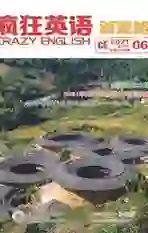MIT muscle?control system for drones 麻省理工学院的无人机肌肉控制系统
2021-07-29朱飞
朱飞
麻省理工學院计算机科学与人工智能实验室发布了一段视频,宣称用手势就可以控制无人机等设备。这项技术还可以运用到其他领域,有较广泛的实用价值。
MITs Computer Science and Artificial Intelligence Lab(CSAIL) has released a video of their ongoing work using input from muscle signals to control devices. Their latest involves the full and fine control of drones (无人机), using just hand and arm gestures to pass through a series of rings.
This work is impressive not only because theyre using biofeedback(生物反馈) to control the devices, instead of visual or other kinds of gesture recognition, but also because how specific the controls can be, setting up a range of different potential applications for this kind of remote technology. This particular group of researchers has been looking at different applications of this technology, including its use in cooperative robotics for potential industrial applications.
Drone piloting is another area that could have big benefits in terms of real?world use, especially once you start to imagine entire groups of these taking flight with a pilot provided with a view of what he can see via VR.
That could be a great way to do site surveys for large constructions, for example, remote equipment inspection of offshore platforms and other constructions that are hard for people to reach.
Seamless(无缝的) man?machine interaction is the ultimate goal of the team working on this technology. Because we know how our own movements and ability influence our environment most effectively, they believe the process should be smooth when controlling and working with robots.
Thinking and doing are essentially happening in parallel when we interact with our environment, but when we act through the extension of machines or remote tools, theres often something lost in translation, which results in the requirement of lots of training.
[Reading][Check]
1. Which is the technologys highlight?
A. Diverse functions.
B. Widespread popularity.
C. Great accuracy.
D. Interesting interaction.
2. In which situation can we use the technology?
A. Piloting a plane.
B. Inspecting a signal tower.
C. Building a cottage.
D. Recording a VR video.
3. What does the underlined phrase “the process” in paragraph 5 refer to?
A. Man?machine interaction.
B. Working on the technology.
C. Influencing the environment.
D. Manned plane flight.
4. What does the author want to tell us in the last paragraph?
A. The background of the remote tools.
B. The feature of human interaction.
C. The next research focus of the technology.
D. The necessity of developing the technology.
